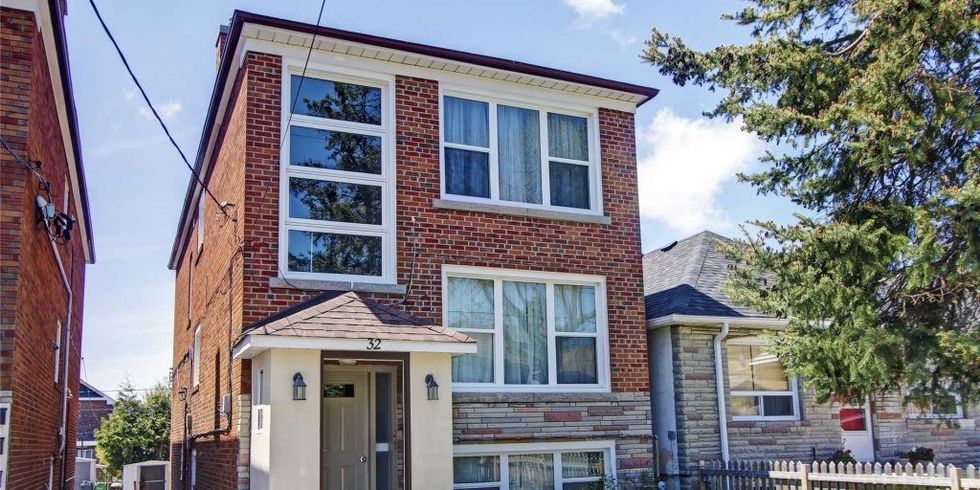It's been clear for a while now that more work needs to be done to combat Ontario's housing crisis. Both provincial and local boards and associations continue to call on the different levels of government to take better action, sharing varying plans that would help increase density and housing options across the province.
The Toronto Region Board of Trade is the latest group to do so, releasing a new report that suggests eliminating exclusionary zoning policies that prohibit different “missing middle” building types in residential neighbourhoods throughout the province.
On Tuesday, the Board released ‘Meeting in the Middle: A plan to end exclusionary zoning and tackle Ontario's housing crisis,' a proposed framework outlining how the provincial government can eliminate exclusionary zoning policies that prohibit even modest forms of density such as triplexes or small apartment buildings in most residential neighbourhoods.
The report comes at a time when housing, or the lack thereof, remains a top concern in the province. By 2046, Ontario's ppulation is expected to increase to over 20 million -- a 36% increase from 2020 -- with the GTA expected to see the fastest rate of growth, the report says.
READ: STOREYS’ 2021 Real Estate Issue of the Year: Inclusionary Zoning
All of these new people and current residents will need somewhere to live, putting added pressure on the province's already stretched housing supply. As such, the province needs to prioritize creating more homes in existing residential neighbourhoods.
The Board says constructing more varying types of homes will not only help address the region’s affordability crisis but also enable a host of other economic, environmental, and social benefits.
Currently, Ontario’s land use planning policies concentrate urban growth in limited geographic areas, while most residential neighbourhoods are protected from even modest forms of density such as triplexes or small apartment buildings, which represent the ‘missing middle’ of residential housing stock between single dwelling and large apartments.
The Board says current policy limitations prevent more of this kind of ‘middle’ housing development, therefore blocking efforts to house more residents in walkable urban centres.

In response, the Board has outlined five actions that the Ontario Government can take to increase housing affordability: 1) end exclusionary zoning, 2) establish standards, 3) broad geographic reach, 4) moderate development changes, and 5) create affordable ownership opportunities.
The proposed framework outlines an approach, which eliminates exclusionary zoning, supported by additional policies such as bringing development charges for a four-unit building in line with a single-detached house.
The Board recommends that through planning reforms, the provincial government can eliminate ‘Yellowbelts’ that only permit single-unit homes. Additionally, the provincial government could enable as-of-right permissions for at least four units in a building in all residentially zoned areas and consider designating a higher baseline (e.g. eight units and/or four to five storeys) for properties near transit stations.
Municipalities like Toronto have already taken steps to enable more “missing middle” housing types, and provincial leadership is positioned to help accelerate this process for other cities.
The report also notes that the framework would apply to all medium municipalities with 30,000 or more residents and large municipalities with 100,000 or more residents.
“High housing prices are already costing our economy up to $8 billion per year - the time for action is now,” said Jan De Silva, President & CEO of the Toronto Region Board of Trade. “Ending exclusionary zoning will increase our housing supply and ensure working families can afford to live here. This helps companies recruit and retain talent which, in turn, will draw innovative companies to invest in Toronto.”
READ: Housing Affordability Crisis Costs GTA Up to $8B Annually
Additionally, by eliminating exclusionary zoning policies, Craig Ruttan, Policy Director, Housing, at the Toronto Region Board of Trade, says there will be a host of benefits beyond housing affordability.
“This framework would provide opportunities to help address systemic racism, maximize existing infrastructure, and deliver environmental benefits – it’s a winner across the board,” said Ruttan.
This report comes during a crucial time for discussions around housing policy in Ontario. Later this week, there is a summit between big-city mayors and the provincial government as well as Toronto council’s critical discussion of their Multiplex Study.





















